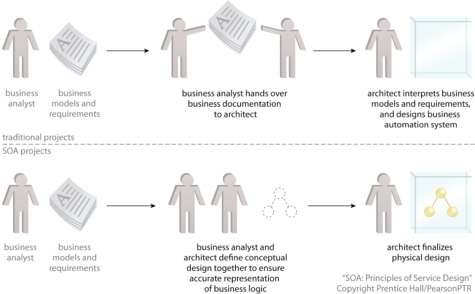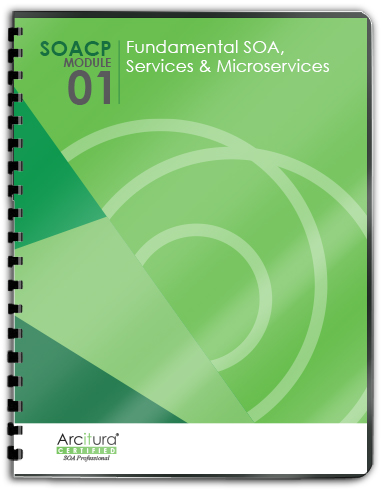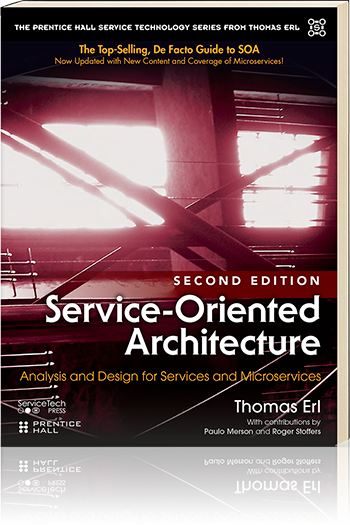SOA Patterns > Basics > What is SOA > Service-Oriented Computing in the Real World > Service-Oriented Analysis
Service-Oriented Analysis
To effectively deliver standardized services in support of building a service inventory, it is recommended that organizations adopt a methodology specific to SOA and consisting of structured analysis and design processes.
Within SOA projects, these processes are centered around the accurate expression of business logic through technology, which requires that business analysts play a more active role in defining the conceptual design of solution logic. This guarantees a higher degree of alignment between the documented business models and their implementation as services. Agnostic business services especially benefit from hands-on involvement of business subject matter experts, as the improved accuracy of their business representation increases their overall longevity once deployed.
Service-oriented analysis establishes a formal analysis process completed jointly by business analysts and technology architects. Service modeling, a sub-process of service-oriented analysis, produces conceptual service definitions called service candidates. Iterations through the service-oriented analysis and service modeling processes result in the gradual creation of a service inventory blueprint.

Figure 1 – A look at how the collaboration between business analysts and technology architects changes with SOA projects.
While the collaborative relationship between business analysts and architects depicted at the lower half of the above figure may not be unique to an SOA project, the nature and scope of the analysis process is.
For an overview of the step-by-step service-oriented analysis and service modeling processes, visit SOA Methodology.

